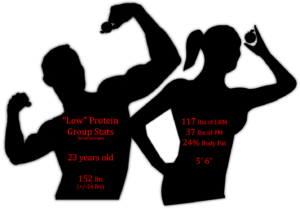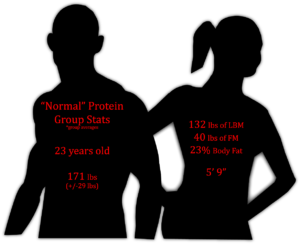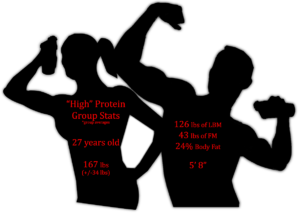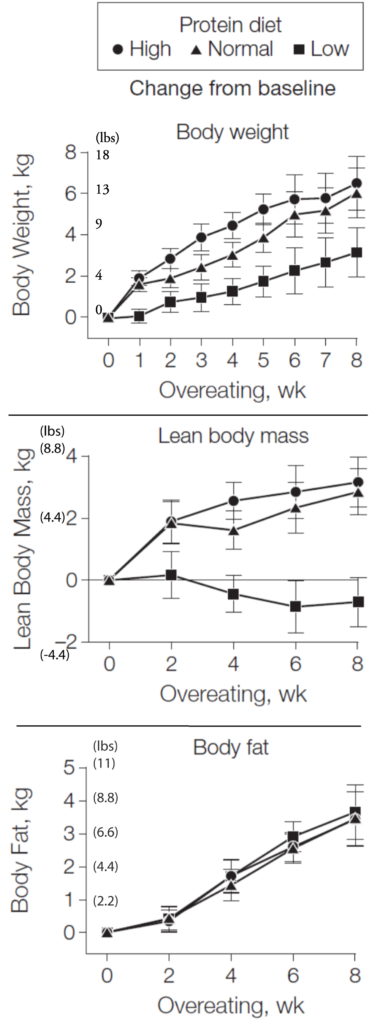What happens to our bodies and metabolisms when we eat a lot of protein?
The official USA recommended daily allowance (RDA) for protein is 0.36 g/lb/day. That’s 60g/day for a 165 lbs individual. Protein and exercise researchers suggest that physically active people should consume higher amounts of protein than the RDA. Despite the lack of evidence in the research literature, there is also a popular meme that high protein consumption will cause kidney damage.
While we’ve discussed all this before, what if we could examine this topic under a high-powered gold-plated microscope? What if we had the Gold Standard techniques of research available to precisely pick apart the effects of protein on metabolism, body composition, and blood work?
Today, we look at a study that did just that. In fact, there was so much data that the researchers published two papers, in 2012 & 2015. This group scienced the sh*t out of this topic. There’s so much that involved with this study that we will have to break this up into two journal clubs. There’s just too much information!
For this week, let’s review what the study actually entailed and what the initial findings were.
Methods
The study lasted a while, with the total time depending upon how long researchers took to establish the precise daily metabolism of each participant. There were 25 participants in total. They had to live at the medical center. In order to measure and precisely control the diets of the participants, they were under supervision the entire time. When the participants started the study, they had a number of measurements done. Weight/height was measured. They had DEXA scans for body composition. They had EKGs for their hearts. They had their VO2 max tested. Full blood tests were done, including insulin and metabolic sensitivity tests. Muscle and fat biopsies were taken.
The researchers took up to a month to establish the precise metabolism of each participant. Their metabolisms were initially estimated and then they spent 24 hours inside a sealed chamber (a small room, basically. See here for more reading). Using basically the same principles as measuring VO2 max or resting metabolism, the sealed room allowed the researchers to measure all oxygen breathed in and carbon dioxide exhaled. That info was used to calculate energy expenditure, aka how many kcals participants burned. That data was also used to figure out the ratio of fat vs carbs burned. Sensors in the chambers were used to track activity levels. All of that data determined the daily metabolism of the participants and how it broke down into resting metabolism, sleeping metabolism, activity calories burned, etc.
After that 24 hour period in the chamber, participants’ metabolisms were measured by doubly-labeled water. That also began a minimum 2 week period in which they ate a baseline diet that matched the estimated number of calories they burned each day. Over the course of 2 weeks to a month, the researchers tweaked the diets as needed for the participants to remain the same weight each day. After this, the experimental part of the study began.
Below are the starting descriptive stats for the participants. As always, they’re group averages and rounded to the nearest whole number for the ease of viewing.
The participants were split into 3 groups. Every group would overeat by 40% of their maintenance level for 8 weeks. The groups differed, though, by how much protein/fat they ate. The first group, “Low PRO”, ate only 5% of their calories as protein. That corresponded with the RDA. The second group, “Normal PRO”, ate 15% of their calories as protein. The third group, “High PRO”, ate 25% of their calories as protein. Each group had the same amount of carbs in their diet, 42%. The fat in the diet was adjusted based on the remaining calories available.
During these 8 weeks, the participants ate only food provided by the medical center research kitchen. They were all supervised 24 hours/day. They wore accelerometers to measure their walking and activity levels. No one was allowed to exercise. So, they were “sedentary”. They had DEXA and CT scans done every 2 weeks. Their resting metabolism was measured weekly. They had another 24 hour period in the metabolic chamber after the first 2 weeks of this period. They met with counselors weekly and they had behavioral assessments done each month.
After 8 weeks, all participants had final measurements in everything.
Results
Rather than leave everything up in the air until next week, I will reveal the weight results. After the 8 weeks were up, everyone gained weight.
The Low PRO group gained 7 lbs. The Normal PRO group gained 13 lbs. The High PRO group gained 14 lbs.
The Low PRO group lost lean body mass (LBM), while the Normal PRO & High PRO groups gained it! Below is a breakdown of the body composition results.
Stay tuned…
We’ll take a breather at this point. Next week we’ll go in depth with the body composition results and we’ll discuss what happened to the participants’ metabolisms.
If you have any questions about this study or anything I said, please feel free to leave a comment. I will get back to you and others may have insight to offer, too. If you have any questions or topic suggestions that you would like answered as a post, then please email me at robert@analyticfitness.com.
Don’t forget to like Analytic Fitness on Facebook, or follow me on Twitter or the other social medias!









No Responses